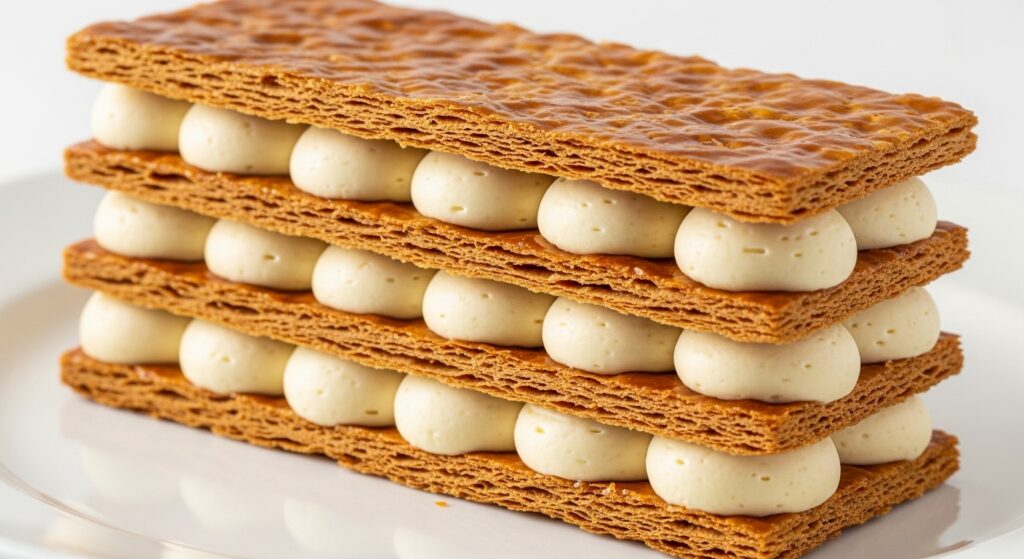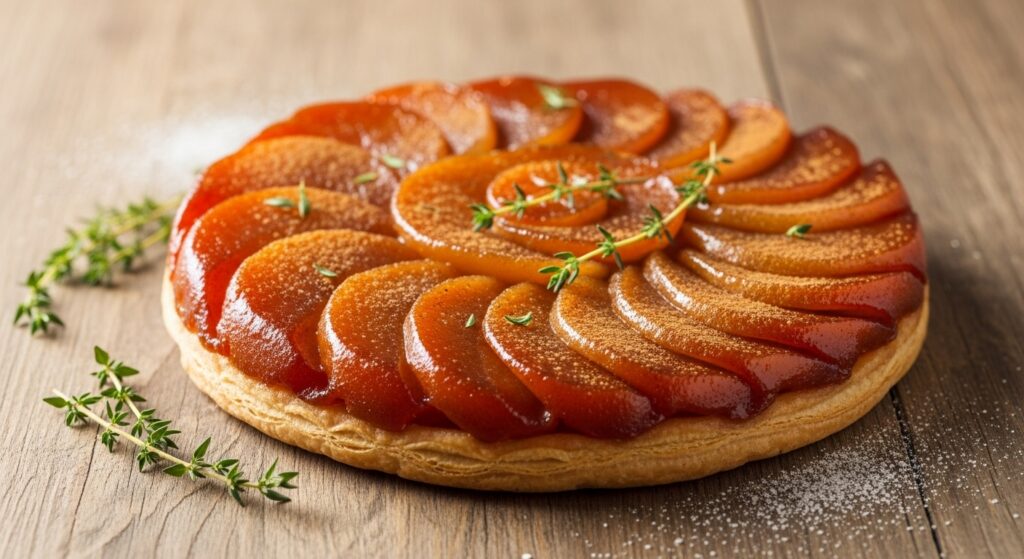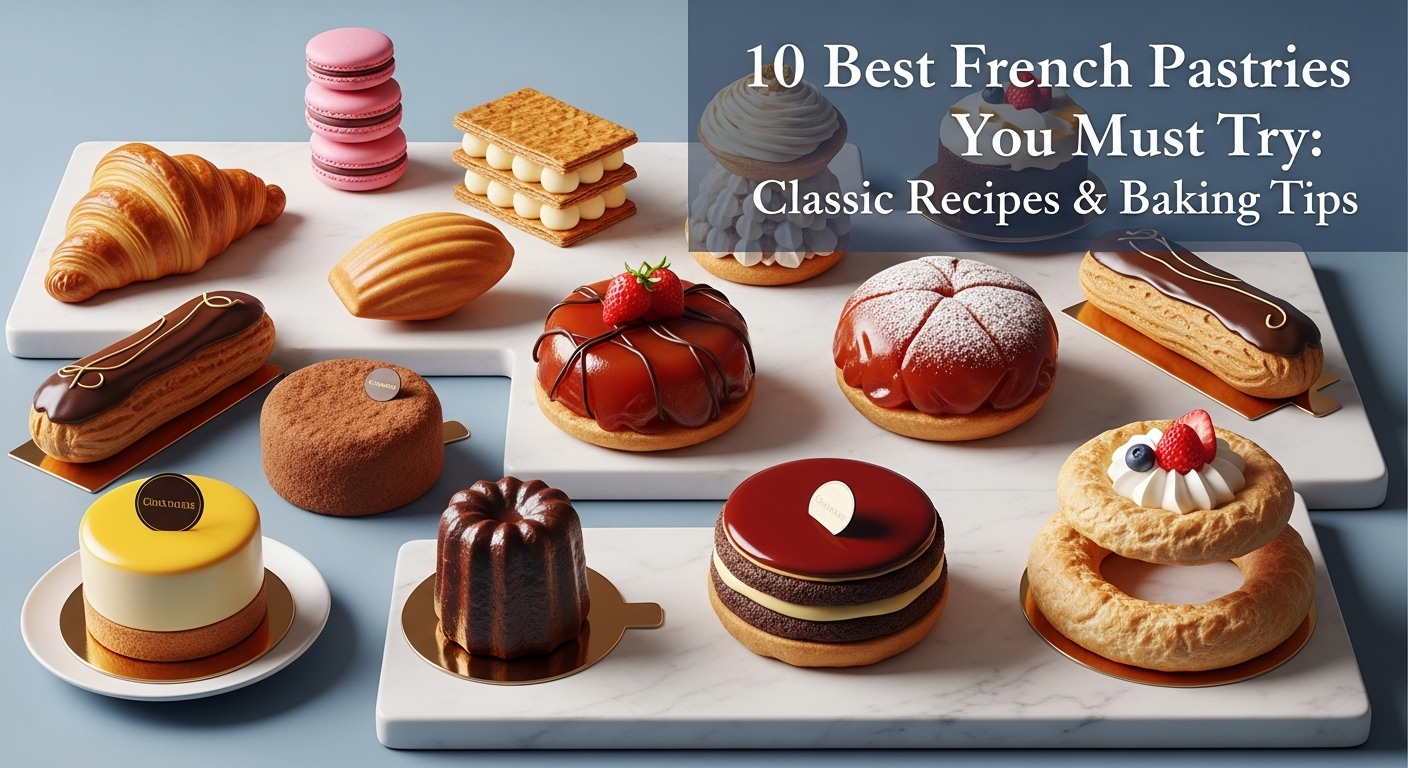French pastries are pure magic on a plate. These authentic French treats have won hearts across the globe with their incredible taste and stunning beauty. Every bite tells a story of centuries-old traditions and masterful craftsmanship.
Walking into a French pastry shop feels like entering a dreamland. The aroma of butter, vanilla, and fresh-baked goods creates an experience you’ll never forget. These traditional French sweets aren’t just desserts – they’re works of art that happen to taste amazing.
French patisserie represents the highest level of baking excellence. Each recipe has been perfected over generations. Master bakers have spent lifetimes creating these classic pastry recipes that continue to amaze food lovers everywhere.
Macarons: The Iconic French Almond Cookies
Macarons are the superstars of French bakery desserts. These colorful little sandwich cookies look simple but hide complex secrets. They’re temperamental, demanding, and absolutely worth every challenge they present.
The secret to perfect macarons starts with patience. Age your egg whites for 24 hours at room temperature. This creates stronger meringue and better shells. Many bakers skip this step and wonder why their macarons fail.
French pastry chef techniques emphasize the importance of macaronage. This folding technique requires gentle movements and perfect timing. The batter should flow like thick ribbon when ready. Too much mixing makes flat cookies. Too little creates lumpy disasters.
Temperature matters more than you think. Macarons hate humidity and love consistency. Tap your baking sheet after piping to remove air bubbles. This prevents those heartbreaking cracks that ruin perfect shells.
READ THIS BLOG : Best Antivirus Software with Advanced Anti-Scam Protection
Profiteroles: Cream-Filled Choux Pastry Perfection
Profiteroles bring instant happiness to any table. These golden puffs filled with creamy goodness represent comfort food at its finest. The magic lies in mastering choux pastry – a skill that opens doors to countless French cuisine pastries.
Creating perfect choux pastry requires understanding heat and timing. Cook your flour mixture until it forms a film on the pan bottom. This step develops the right texture for perfect puffs. Add eggs slowly while the mixture stays warm for best results.

Never peek in the oven during baking. Opening the door causes temperature drops that deflate your beautiful puffs. Trust the process and resist temptation. Your patience will be rewarded with hollow centers perfect for filling.
French baking tips and tricks suggest using a pastry bag for consistent sizing. Even profiteroles bake uniformly and look professional. Fill with vanilla ice cream and drizzle with warm chocolate sauce for classic perfection.
Croissants: The Ultimate French Breakfast Pastry
Croissants represent the soul of French breakfast culture. These buttery, flaky crescents require three days of careful preparation. The lamination process creates hundreds of delicate layers that make each bite heavenly.
Traditional French pastry guide techniques emphasize temperature control during lamination. Keep butter and dough at similar temperatures. Too warm, and layers merge into greasy mess. Too cold, and butter breaks through dough.
The folding process builds those signature layers. Each turn multiplies the layers exponentially. By the final fold, you’ll have created hundreds of butter-dough layers that puff into flaky perfection.
Proofing requires patience and observation. Properly proofed croissants wobble gently when shaken. This indicates relaxed gluten and developed layers. Rush this step, and you’ll lose the magic that makes croissants special.
Éclairs: Lightning-Fast French Chocolate Delights
Éclairs disappear faster than lightning strikes. These elegant pastries use choux pastry as their foundation but add sophisticated flair. They’re popular French desserts worldwide for excellent reasons.
Piping éclairs demands confidence and steady hands. Create straight, even lines for professional appearance. Wobbly éclairs bake unevenly and look amateurish. Practice makes perfect with pastry bag techniques.
Fill éclairs with genuine vanilla pastry cream. Artificial flavoring can’t match real vanilla’s depth and complexity. The chocolate glaze isn’t just decoration – it protects the pastry and adds essential flavor contrast.
Professional bakers poke three small holes in each éclair bottom before filling. This prevents sogginess and makes filling much easier. Small details like this separate good éclairs from extraordinary ones.
Crème Brûlée: The Classic French Burnt Cream Dessert
Crème brûlée creates pure theater at the table. That satisfying crack of caramelized sugar followed by silky custard underneath never gets old. This homemade French desserts favorite combines simplicity with sophistication.
The custard base demands gentle treatment. Use water bath cooking to prevent curdling. Water should reach halfway up your ramekin sides. Low, slow cooking creates that signature silky texture everyone loves.
Strain your custard mixture twice for perfection. Once after heating, once before pouring into ramekins. This removes any lumps and ensures smooth, creamy results every time.
The sugar topping requires patience and technique. Sprinkle evenly and torch until golden brown. Good caramelization takes time but creates that perfect contrast between warm, crunchy top and cool, creamy bottom.
Mille-Feuille: Thousand-Layer French Pastry Magic
Mille-feuille showcases French pastry ingredients list mastery at its finest. These delicate layered pastries require precision, skill, and unwavering attention to detail. They’re engineering marvels disguised as desserts.
Puff pastry forms the foundation of this masterpiece. Roll evenly, turn consistently, and rest properly between folds. Temperature control prevents butter from melting into dough and ruining those precious layers.

Assembly demands patience and gentle hands. Cut pastry layers while slightly warm for clean, sharp edges. Use real vanilla pastry cream – shortcuts show in the final product. Quality ingredients make all the difference.
The traditional powdered sugar dusting serves multiple purposes. It adds sweetness, creates visual appeal, and cleverly hides minor imperfections that might otherwise show.
Pain au Chocolat: Buttery French Chocolate Bread
Pain au chocolat represents everything beautiful about French breakfast culture. The ritual of warm pastry from the local boulangerie creates simple pleasure perfected over centuries. These easy French dessert recipes require time but reward with incredible results.
Use chocolate batons instead of chips for authentic results. Batons hold their shape during baking while melting beautifully inside. The chocolate should be firm enough to maintain structure but melt when heated.
Double egg wash creates that gorgeous golden color that makes these pastries irresistible. Brush once before final proof, once before baking. This technique separates amateur results from professional-looking pastries.
Step by step French baking involves understanding that laminated dough requires respect and patience. The same process that creates croissants makes pain au chocolat magical.
Madeleines: Shell-Shaped French Tea Cakes
Madeleines are poetry transformed into pastry form. These delicate shell-shaped cakes perfectly complement afternoon tea or coffee. Traditional French sweets like madeleines have charmed generations with their subtle elegance.
Proper madeleine molds create those signature ridged shells that aren’t just decorative. The ridges increase surface area for better browning and create the classic appearance everyone recognizes.
Butter and flour your molds meticulously. Any missed spots mean stuck cakes and broken hearts. This attention to detail separates successful madeleine making from frustrating failures.
Batter resting improves texture dramatically. This hydration time allows flour to absorb liquids fully. The result is tender, moist cakes with subtle lemon fragrance that transports you to French countryside cafés.
Tarte Tatin: Upside-Down French Apple Tart
Tarte Tatin celebrates beautiful accidents that became legendary. The Tatin sisters’ dropped tart created a dessert that perfectly captures rustic French charm. This how to make French pastries favorite embraces seasonal fruit in quintessentially French style.
Caramel forms directly in your tart pan through careful sugar and butter cooking. Heat until golden and fragrant but not burnt. The caramel provides both flavor and binding for the apple arrangement.

Arrange apple slices in overlapping circles for both beauty and structure. This isn’t just aesthetics – proper arrangement helps the tart hold together during the dramatic flip.
The flip moment requires confidence and quick action. When executed properly, you’ll reveal glistening caramelized apples that taste like autumn perfection in every bite.
READ THIS BLOG : What Is Agentic AI?
Canelés: Caramelized French Rum Pastries
Canelés break every traditional pastry rule with rebellious charm. These cylindrical treats from Bordeaux feature crispy exteriors hiding custardy interiors. The contrast creates addictive flavor combinations that keep you coming back.
Traditional copper molds aren’t just fancy equipment – they conduct heat differently than regular pans. This creates the signature caramelized shell that makes canelés special. High baking temperatures create controlled burning that forms the exterior while keeping centers soft.
Batter must rest overnight for proper hydration. This patient waiting develops flavor complexity and improves texture significantly. French baking techniques often require time, but results justify the wait.
The rum and vanilla combination creates sophisticated flavor profiles that appeal to adult palates. These aren’t simple sweet treats – they’re complex pastries with character.
Frequently Asked Question
What makes French pastries different from other pastries?
French patisserie emphasizes technique, tradition, and quality ingredients. French bakers use higher-fat European butter and follow time-tested methods passed down through generations.
Can beginners make French pastries at home?
Absolutely! Start with simpler recipes like madeleines or basic tarts. Build your skills gradually through practice and patience. Even master bakers started as beginners.
What are essential ingredients for French baking?
Quality matters more than quantity. Use European-style butter with 82% fat content, fresh eggs, premium flour, real vanilla, and heavy cream. Never compromise on ingredients.
How long do French pastries stay fresh?
Most best French pastries to try are meant for immediate enjoyment. Choux pastries should be eaten fresh, while tarts can last a few days when properly stored.
What’s the most challenging French pastry to make?
Croissants and puff pastry challenge even experienced bakers. The lamination process requires precision and timing, but dedication and practice make mastery possible.
Conclusion
French pastries represent edible art that connects us to centuries of culinary tradition and cultural heritage. Each classic pastry recipe embodies generations of bakers perfecting their craft through love, patience, and unwavering dedication. From delicate macarons to rustic tarte tatin, these traditional French sweets offer something magical for every skill level and taste preference. Learning French baking techniques develops patience, precision, and deep appreciation for quality ingredients. Whether creating simple madeleines or complex croissants, each pastry teaches valuable lessons about technique, tradition, and the art of bringing joy to others through food.

David is a seasoned SEO expert with a passion for content writing, keyword research, and web development. He combines technical expertise with creative strategies to deliver exceptional digital solutions.







